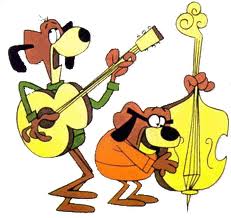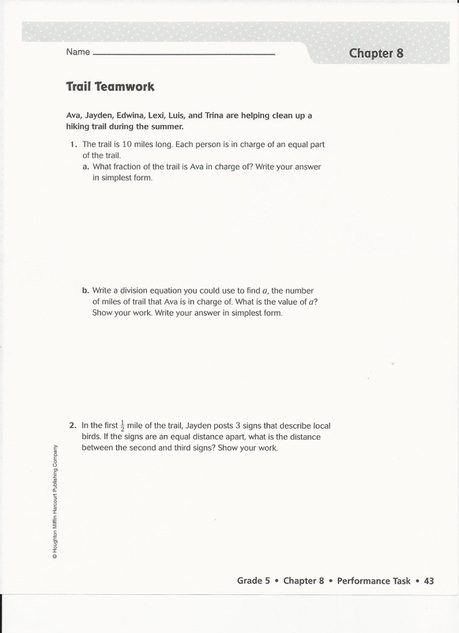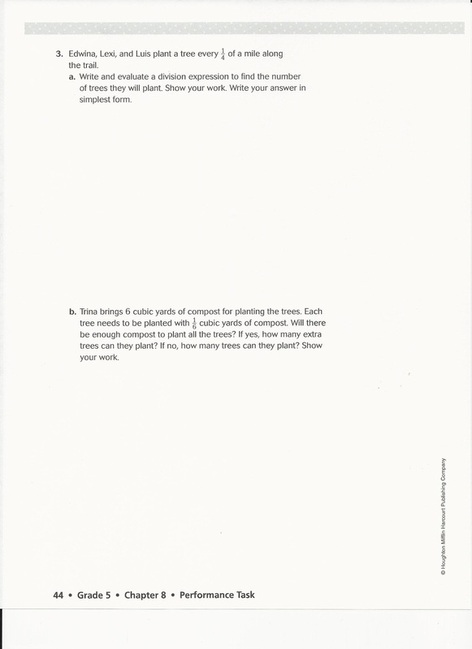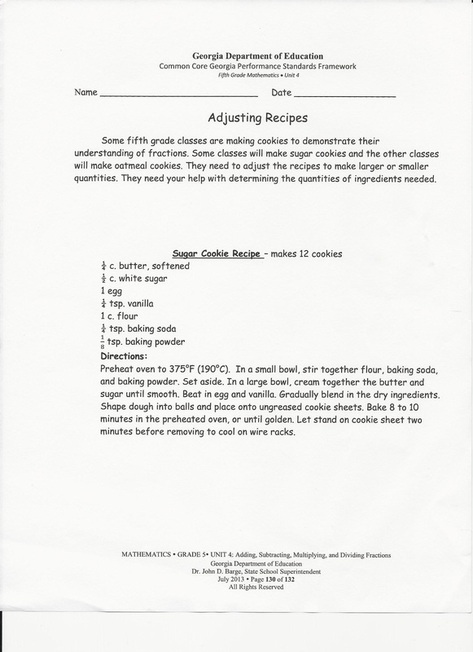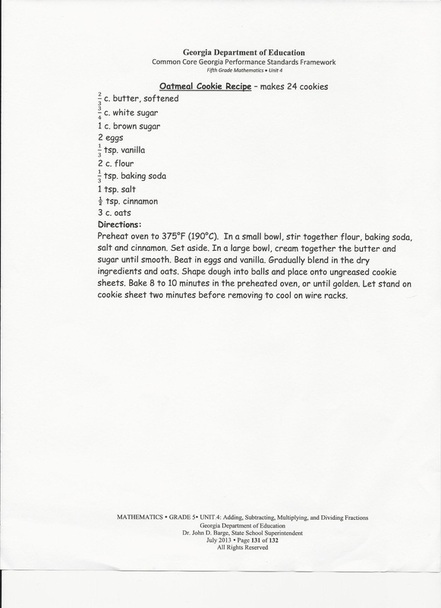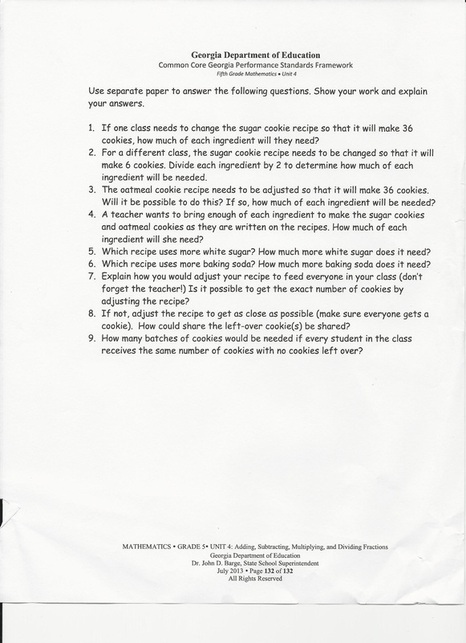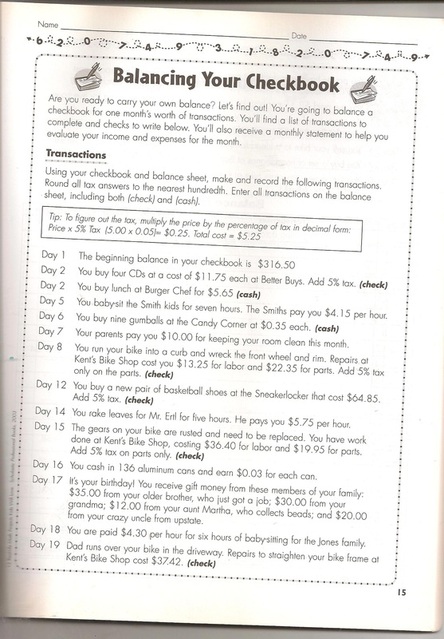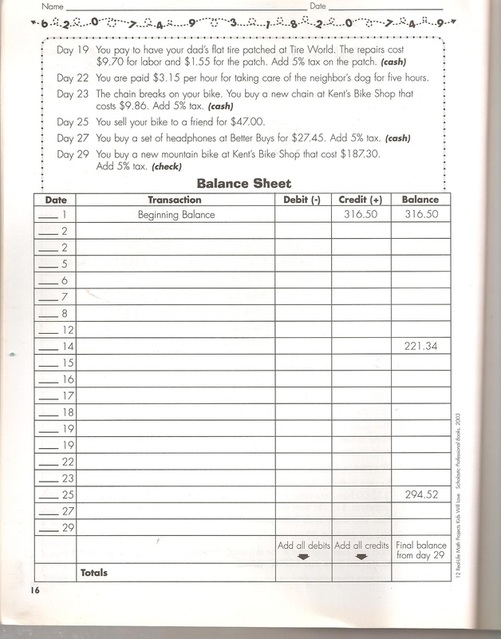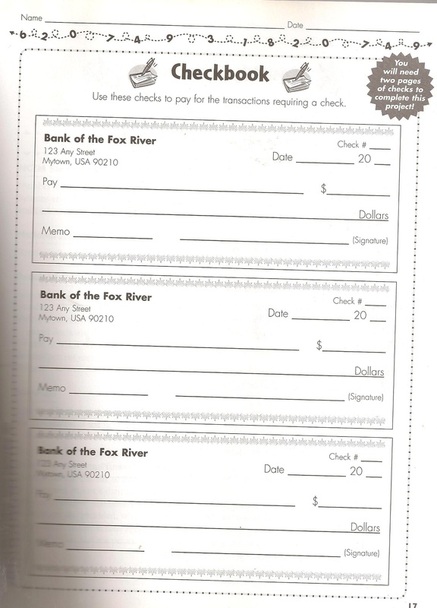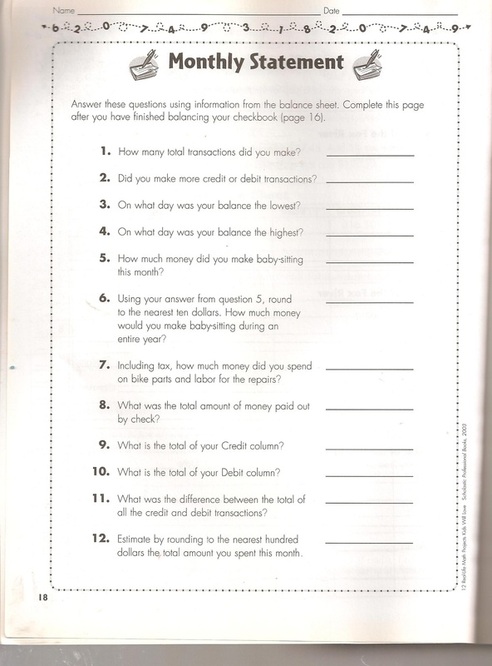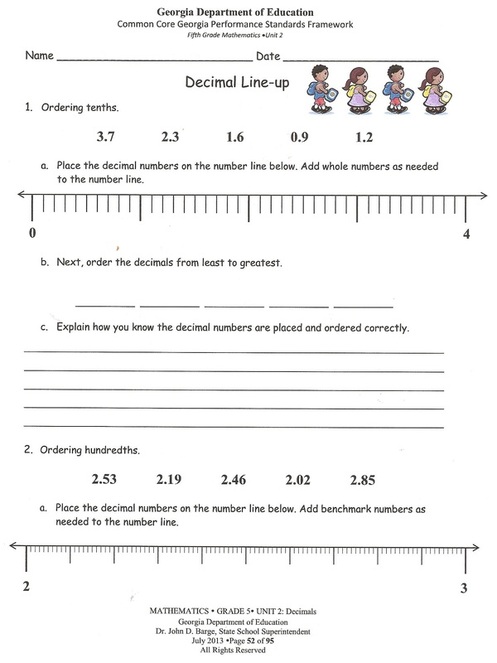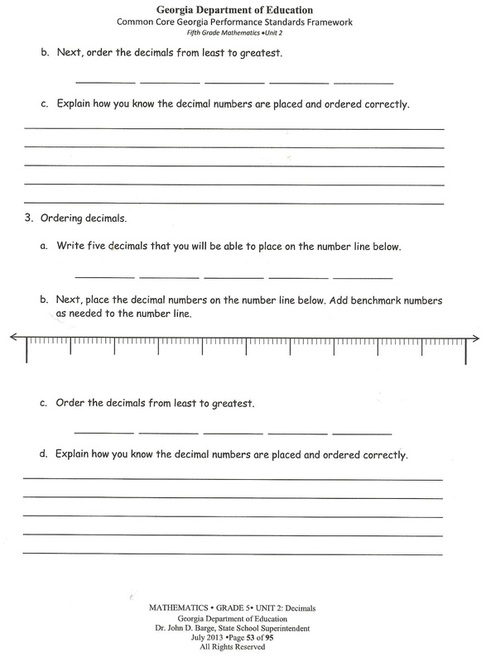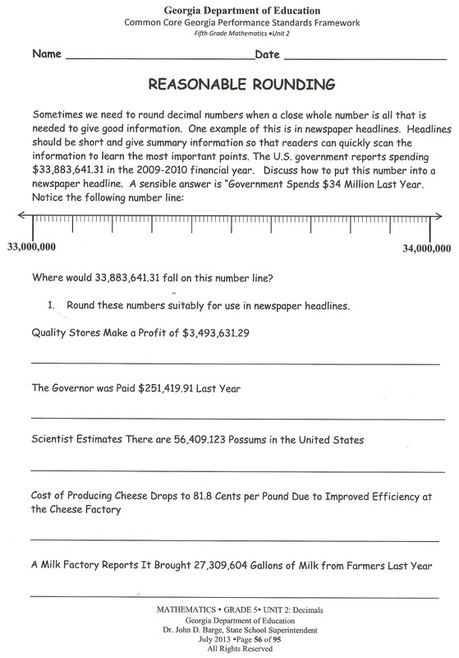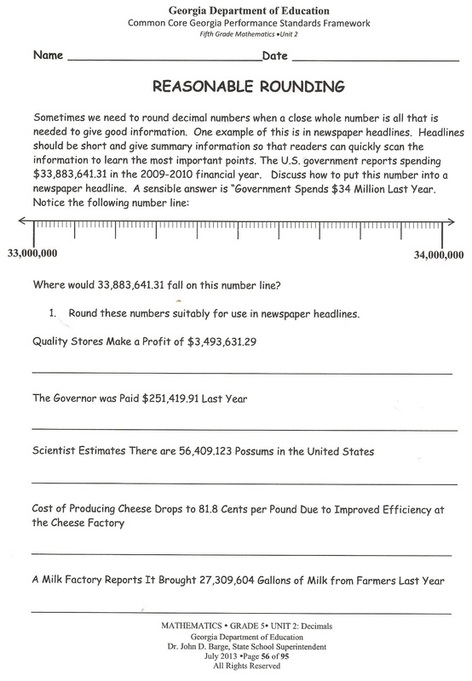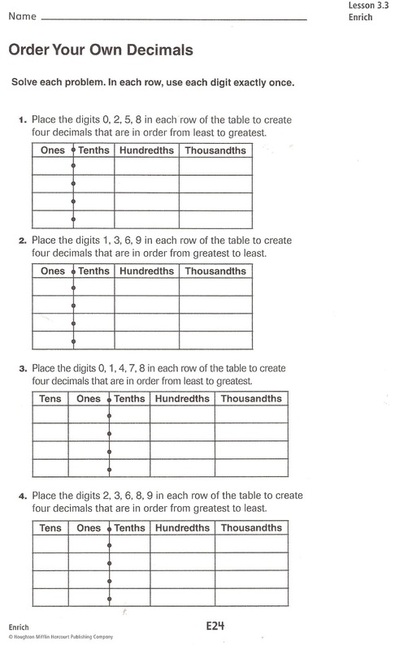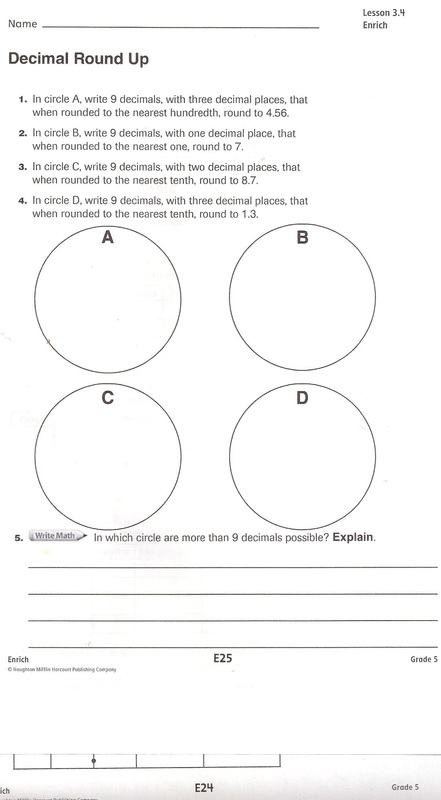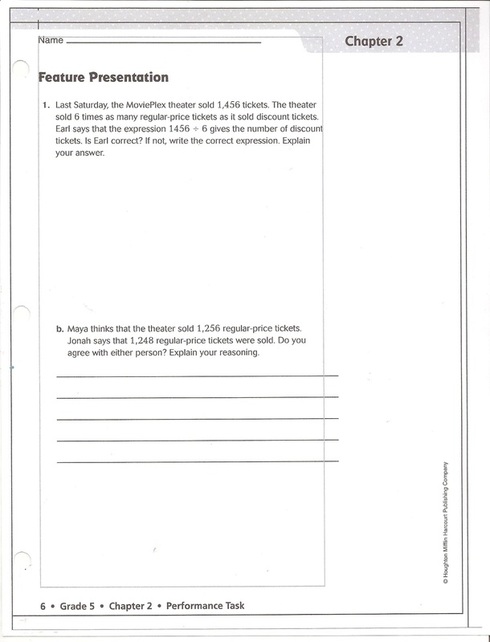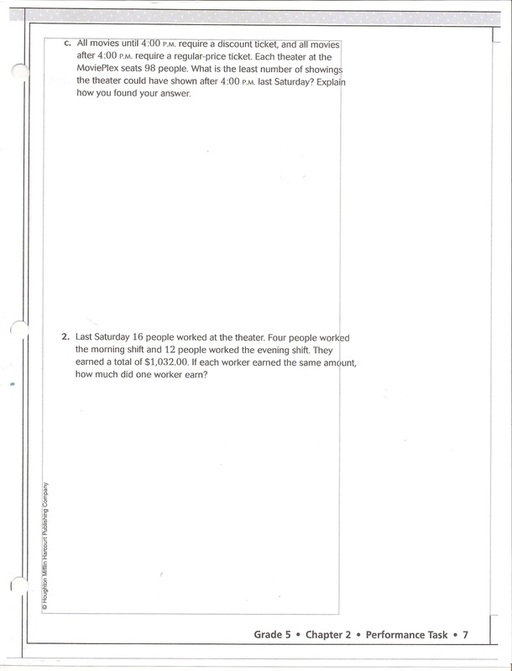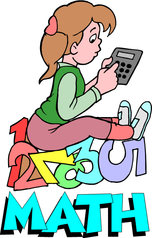MATH COORDINATE GAME: http://www.mathsisfun.com/games/battleship.html
TIME ZONE-ROCK STAR WEBQUEST: YOU MAY WORK IN TEAMS OF ONE, TWO OR THREE. DUE TUESDAY, MAY 26. FOLLOW ALL ACTIVITIES IN LINK BUT KEEP IN MIND THAT WE LIVE IN NEW YORK CITY AND NOT WASHINGTON STATE AS STATED IN WEBQUEST.http://mrronjensen.com/time%20zone%20webquest.html
PLEASE ADD AT LEAST FIVE ADDITIONAL CITIES TO THE SPREADSHEET-TABLE THAT COMPARES THEIR TIME TO TIME IN NEW YORK CITY ALONG WITH DISTANCES. ALSO, CREATE AT LEAST FOUR OF YOUR OWN MULTI STEP WORD PROBLEMS INVOLVING TIME ZONES. (ADD AN ANSWER KEY, TOO THAT SHOWS AND EXPLAINS ALL OF YOUR WORK).
MENU MATH: DUE TUESDAY, MAY 6TH: YOU MAY WORK ALONE OR WITH ONE OTHER PARTNER.
| menumath2.doc | |
| File Size: | 68 kb |
| File Type: | doc |
MATH TASK FOR CHAPTER EIGHT-DUE WEDNESDAY 4/9:
COOKING WITH FRACTIONS: (REVISED) MAKE SURE YOU HAVE NEW COPY
| cooking_with_fractions.docx | |
| File Size: | 208 kb |
| File Type: | docx |
| mathprojectrubric.doc | |
| File Size: | 27 kb |
| File Type: | doc |
ADJUSTING A RECIPE:
| adjusting_a_recipeactivity.docx | |
| File Size: | 45 kb |
| File Type: | docx |
PRACTICE WITH MIXED FRACTIONS:
http://www.ixl.com/math/grade-5/multiply-a-mixed-number-by-a-whole-number
Or http://www.ixl.com/math/grade-5/multiply-two-mixed-numbers
Word problems: http://www.ixl.com/math/grade-7/multiply-fractions-and-mixed-numbers-word-problems
Or: http://mrnussbaum.com/grade5standards/572-2/
Fraction game: http://www.mathplayground.com/fractions_mixed.html
http://www.sheppardsoftware.com/mathgames/fractions/mathman_improper_fractions.htm
Or http://www.ixl.com/math/grade-5/multiply-two-mixed-numbers
Word problems: http://www.ixl.com/math/grade-7/multiply-fractions-and-mixed-numbers-word-problems
Or: http://mrnussbaum.com/grade5standards/572-2/
Fraction game: http://www.mathplayground.com/fractions_mixed.html
http://www.sheppardsoftware.com/mathgames/fractions/mathman_improper_fractions.htm
MATH EXEMPLAR-MARCH 13: A PUZZLE
A PuzzleTaskMarc, Amanda and Jacob were putting a 100-piece jigsaw puzzle together. Marc placed 1/4 of the pieces into the puzzle. Amanda placed 1/5 of the pieces into the puzzle. Jacob placed the remaining pieces into the puzzle and told Marc and Amanda that he knew exactly how many pieces he had put into the puzzle.
How many pieces did Jacob put into the jigsaw puzzle? Show all your math thinking.
GIANNA, ANSON & PRATIMA: Marc, Amanda and Jacob were putting a 100-piece jigsaw puzzle together. Marc placed 1/2 of the pieces into the puzzle. Amanda placed 1/4 of the pieces into the puzzle. Jacob placed the remaining pieces into the puzzle and told Marc and Amanda that he knew exactly how many pieces he had put into the puzzle.How many pieces did Jacob put into the jigsaw puzzle? Show all your math thinking.
EXTRA CREDIT: Marc, Amanda and Jacob were putting a jigsaw puzzle together. Marc placed 1/4 of the pieces into the puzzle. Amanda placed 1/5 of the pieces into the puzzle. Jacob placed the remaining 55 pieces into the puzzle.
How many pieces are in the jigsaw puzzle? Show all your math thinking.
MATH EXEMPLAR OF THE WEEK FOR FEBRUARY 10-DUE, FRIDAY, FEBRUARY 14:
Task
Mrs. Smith and Mrs. Jones both volunteer in their children’s classrooms. Mrs. Smith volunteers
every 3rd school day for 1/3 of a day. Mrs. Jones volunteers every 5th day of school for 1/2 of a
day. In a given month, which parent spends more time volunteering?
Alternative Versions of Task
More Accessible Version: ONLY GIANNA, ANSON & BEN, YOU MAY DO THIS INSTEAD:
Mrs. Smith and Mrs. Jones both volunteer in their children’s classrooms. Mrs. Smith volunteers
every Monday, Wednesday and Friday for 1/2 of a day. Mrs. Jones volunteers every Tuesday
and Thursday for 3/4 of a day. In a given month, which parent spends more time volunteering?
More Challenging Version-EVERYONE SHOULD TRY THIS FOR EXTRA CREDIT
Mrs. Smith, Mrs. Waite and Mrs. Jones all volunteer in their children’s classrooms. Mrs. Smith
volunteers every 3rd school day for 1/3 of a day. Mrs. Jones volunteers every 5th day of school
for 1/2 of a day. Mrs. Waite volunteers every other school day for 1/5 of a day. In a given
month, which parent spends more time volunteering?
Mrs. Smith and Mrs. Jones both volunteer in their children’s classrooms. Mrs. Smith volunteers
every 3rd school day for 1/3 of a day. Mrs. Jones volunteers every 5th day of school for 1/2 of a
day. In a given month, which parent spends more time volunteering?
Alternative Versions of Task
More Accessible Version: ONLY GIANNA, ANSON & BEN, YOU MAY DO THIS INSTEAD:
Mrs. Smith and Mrs. Jones both volunteer in their children’s classrooms. Mrs. Smith volunteers
every Monday, Wednesday and Friday for 1/2 of a day. Mrs. Jones volunteers every Tuesday
and Thursday for 3/4 of a day. In a given month, which parent spends more time volunteering?
More Challenging Version-EVERYONE SHOULD TRY THIS FOR EXTRA CREDIT
Mrs. Smith, Mrs. Waite and Mrs. Jones all volunteer in their children’s classrooms. Mrs. Smith
volunteers every 3rd school day for 1/3 of a day. Mrs. Jones volunteers every 5th day of school
for 1/2 of a day. Mrs. Waite volunteers every other school day for 1/5 of a day. In a given
month, which parent spends more time volunteering?
FRACTION ACTIVITY FOR MONDAY, FEBRUARY 2:
Sharing Candy Bars
A fifth grade class is split into four groups. Students in the class brought in candy
bars for a fraction celebration. When it was time for the celebration, the candy
bars were shared as follows:
TASK: The first group had 4 people and shared 3 candy bars equally.
The second group had 5 people and shared 4 candy bars equally.
The third group had 8 people and shared 7 candy bars equally.
The fourth group had 5 people and shared 3 candy bars equally.
When the celebration was over the children began to argue that the distribution
of candy bars was unfair, that some children got more to eat than others. Were
they right? Or, did everyone get the same amount?
Reflect and Respond:
• Justify and explain why your collection is less than one whole, equal to one whole or
more than one whole.
• How far away from a whole is your fraction? How do you know?
• What if the pieces were halves instead of eighths? How would your answer change?
• Did you develop a shortcut to find your answers?
• Did you identify any patterns or rules? Explain!
A fifth grade class is split into four groups. Students in the class brought in candy
bars for a fraction celebration. When it was time for the celebration, the candy
bars were shared as follows:
TASK: The first group had 4 people and shared 3 candy bars equally.
The second group had 5 people and shared 4 candy bars equally.
The third group had 8 people and shared 7 candy bars equally.
The fourth group had 5 people and shared 3 candy bars equally.
When the celebration was over the children began to argue that the distribution
of candy bars was unfair, that some children got more to eat than others. Were
they right? Or, did everyone get the same amount?
Reflect and Respond:
• Justify and explain why your collection is less than one whole, equal to one whole or
more than one whole.
• How far away from a whole is your fraction? How do you know?
• What if the pieces were halves instead of eighths? How would your answer change?
• Did you develop a shortcut to find your answers?
• Did you identify any patterns or rules? Explain!
DIVISION MATH-DUE WEDNESDAY, JANUARY 29:
| divisionmathproject.doc | |
| File Size: | 395 kb |
| File Type: | doc |
DIVISIBILITY RULES: YOU MAY WISH TO PUT A COPY IN YOUR MATH NOTEBOOKS:
| divisibility_rules.doc | |
| File Size: | 33 kb |
| File Type: | doc |
CHECKBOOK CHALLENGE: PART ONE IS DUE FRIDAY, NOVEMBER 22. COMPLETED TASK WITH WRITTEN RESPONSE IS DUE WEDNESDAY, NOVEMBER 27. PLEASE PRINT OUT TASK AND FOUR PAGES (PLUS AN EXTRA PAGE OF THE CHECKS).
| checkbook_challenge.doc | |
| File Size: | 41 kb |
| File Type: | doc |
PRINT TWO OF THESE PAGES:
DECIMAL LINEUP:
REASONABLE ROUNDING:
ENRICHMENT 3.3 AND 3.4:
PERFORMANCE TASK FOR CHAPTER TWO:
WE WILL BE USING AN EXCITING NEW MATH PROGRAM CALLED GO MATH!
GO Math! is a focused program designed to meet the objectives and intent of the Common Core State Standards for Mathematics. The author team for GO Math! consists of mathematics educators and school district personnel and includes representation from the leadership of NCTM. The team’s balance between state and national perspectives as well as the team’s research expertise and practical experience makes GO Math! both accessible and mathematically sound.
GO Math! was specifically written to provide thorough coverage of the CCSS with an emphasis on depth of instruction. Particular attention was given to providing support for teachers as they transition to a focused, rigorous curriculum. These efforts are apparent in the ways lessons begin with context‐based situations and progress toward more abstract problems. Students and teachers are supported as they advance from concrete to abstract content through the use of models and math talk prompts presented in the Student Editions, and sample questions provided in the Teachers Editions. The program is designed so that teachers can easily create the environments necessary for teaching the Common Core State Standards for Mathematics with depth without having to develop new materials.
- See more at: http://www.hmhco.com/shop/education-curriculum/math/elementary-mathematics/go-math#sthash.coV4QpsL.dpuf
The Go Math program will be supplemented with various resources such as Exemplars, problems of the week, Math Steps and the Everyday Math program. Each student will be required to complete math projects. These projects will not only enable students to synthesize and apply concepts taught during the unit, but will also increase mathematical reasoning and critical thinking skills. Students will be expected to apply strategies and concepts taught to the real world around them. In addition, students will be required to reflect upon their learning in their math notebooks.
GO Math! was specifically written to provide thorough coverage of the CCSS with an emphasis on depth of instruction. Particular attention was given to providing support for teachers as they transition to a focused, rigorous curriculum. These efforts are apparent in the ways lessons begin with context‐based situations and progress toward more abstract problems. Students and teachers are supported as they advance from concrete to abstract content through the use of models and math talk prompts presented in the Student Editions, and sample questions provided in the Teachers Editions. The program is designed so that teachers can easily create the environments necessary for teaching the Common Core State Standards for Mathematics with depth without having to develop new materials.
- See more at: http://www.hmhco.com/shop/education-curriculum/math/elementary-mathematics/go-math#sthash.coV4QpsL.dpuf
The Go Math program will be supplemented with various resources such as Exemplars, problems of the week, Math Steps and the Everyday Math program. Each student will be required to complete math projects. These projects will not only enable students to synthesize and apply concepts taught during the unit, but will also increase mathematical reasoning and critical thinking skills. Students will be expected to apply strategies and concepts taught to the real world around them. In addition, students will be required to reflect upon their learning in their math notebooks.
MATH CLARIFYING QUESTIONS-DISCUSSION STARTERS:
| mathproblemsolvingcharts.doc | |
| File Size: | 306 kb |
| File Type: | doc |
| math_reflection-higher_order_thinking_questions.docx | |
| File Size: | 11 kb |
| File Type: | docx |
FOUR SQUARE PROBLEM SOLVING:
| foursquare_problemsolving.doc | |
| File Size: | 281 kb |
| File Type: | doc |
| foursquare_template.doc | |
| File Size: | 30 kb |
| File Type: | doc |
CLUE WORDS FOR WORD PROBLEMS:
| clue_words_for_story_problemsmath.doc | |
| File Size: | 37 kb |
| File Type: | doc |

